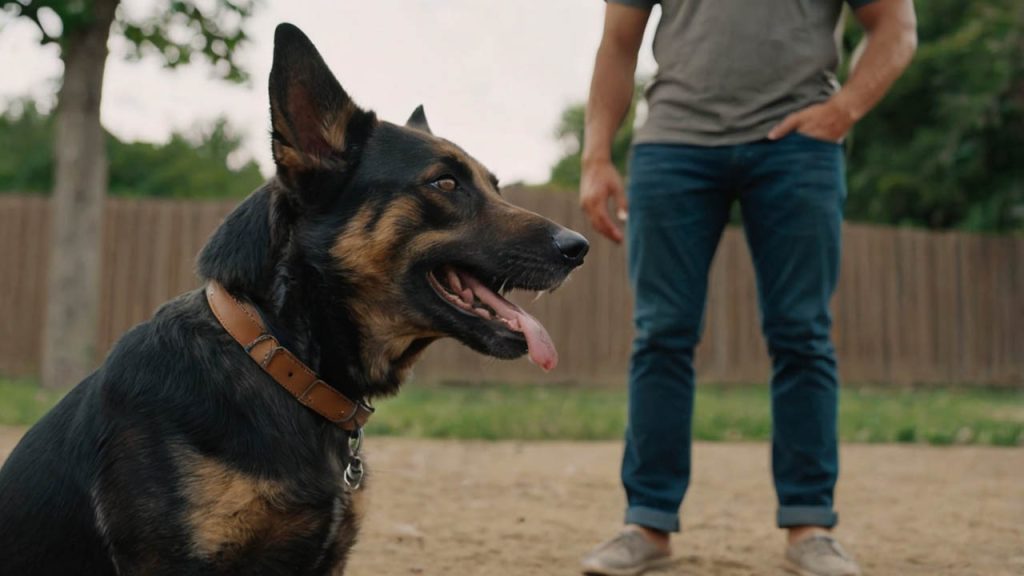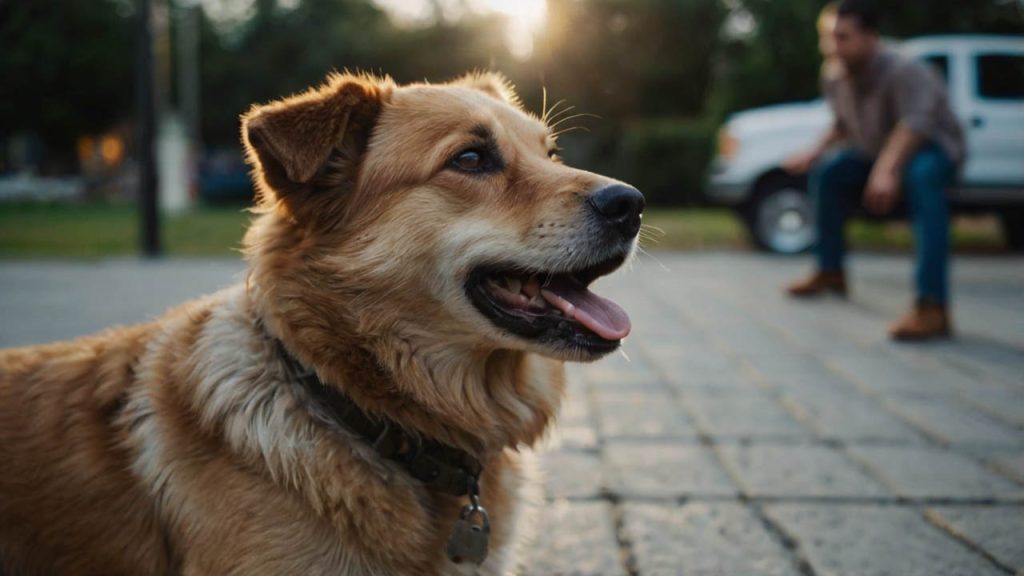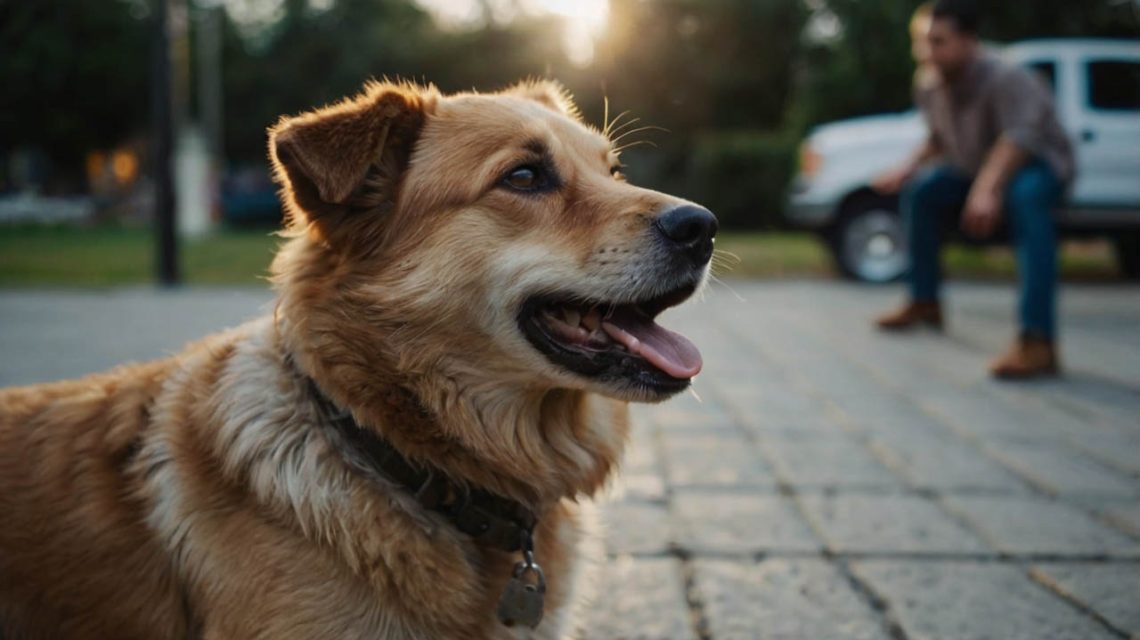The Ultimate Guide: How to Stop a Dog Barking at Strangers
The story is a familiar and often embarrassing one for many dog owners. You’re enjoying a walk when you see someone approaching in the distance. Your body tenses, you tighten your grip on the leash, and you brace for what’s to come. Sure enough, your otherwise sweet and loving dog erupts into a frenzy of barking, lunging, and growling. This stressful public display can make walks feel like a nightmare and leave you desperately searching for a solution to how to stop a dog barking at strangers. The good news is that this is a common issue with clear, trainable solutions.
This comprehensive guide will tell the complete story of how to transform your reactive dog into a calm and confident companion. We will begin by exploring the crucial first step: understanding the underlying emotions—usually fear or anxiety—that are driving the barking. Subsequently, we will provide a detailed, multi-step action plan that combines proactive management with powerful, positive reinforcement training techniques. Furthermore, we will discuss common mistakes that can make the problem worse. Consequently, you will be empowered with a humane and effective strategy for how to stop a dog barking at strangers, allowing you to finally enjoy peaceful walks again.
Why You Must Know How to Stop a Dog Barking at Strangers
Before we dive into the training, it’s vital to understand the “why.” A dog that barks at strangers is not being “dominant,” “aggressive,” or “bad.” In the vast majority of cases, the dog is afraid. The barking is a distance-increasing behavior. The story from your dog’s perspective is: “That scary thing is coming closer! I will bark and lunge to make it go away!” When the stranger inevitably continues walking past, the dog’s behavior is reinforced. They think, “It worked! My barking saved me!”
Therefore, learning how to stop a dog barking at strangers is not about punishing the bark; it’s about changing your dog’s underlying emotional response from fear to neutrality or even happiness.

The First Step: Management – Preventing the Reaction
The story of successful training begins with preventing the rehearsal of the unwanted behavior. Every time your dog practices barking at a stranger, the behavior gets stronger.
Optimizing Your Walks for Success
- Avoid High-Traffic Times and Places: For now, walk your dog during quieter times of the day (early morning, late evening) and in less crowded areas.
- Create Distance: Distance is your best friend. The moment you see a person in the distance, before your dog has a chance to react, create space. This might mean crossing the street, turning around and walking the other way, or stepping behind a parked car.
Your goal is to keep your dog “under threshold”—the point at which they are aware of the person but not yet reacting. This is the magic zone where learning can happen. This is the foundation of how to stop a dog barking at strangers.
Your Training Plan: How to Stop a Dog Barking at Strangers
Once you are managing the environment to prevent reactions, you can begin the active training process. This is a story of changing emotions through positive association.
The Power of Desensitization and Counter-Conditioning (DSCC)
This is the gold-standard, scientifically-backed method for treating fear and reactivity.
- The Concept:
- Desensitization: Gradually exposing your dog to their trigger (a stranger) at a distance where they do not react.
- Counter-Conditioning: Changing your dog’s emotional response to the trigger by pairing it with something they love (like a super high-value treat).
- The “Look at That” Game: This is the practical application of DSCC.
- Find Your Distance: Go to a park or a quiet street where you can see people from a safe distance (e.g., 50 feet away).
- Mark the Look: The moment your dog looks at the stranger, before they can bark, say “Yes!” in a happy tone and immediately give them a piece of boiled chicken or cheese.
- The Stranger Disappears, the Treats Stop: When the person is out of sight, the treats go away.
- Repeat: Do this over and over. Your dog will begin to form a new association. The story in their head will change from “Stranger = Danger!” to “Stranger = Chicken!” This is the core of how to stop a dog barking at strangers.
The “Find It” Game for Quick Retreats
Sometimes, a stranger appears unexpectedly.
- The Method: If a person suddenly gets too close, cheerfully say “Find it!” and toss a handful of high-value treats on the ground in the opposite direction.
- The Effect: This immediately gets your dog’s nose to the ground (a calming activity), distracts them from the trigger, and helps you create distance without pulling or tension on the leash.

What NOT to Do: Common Mistakes That Make Barking Worse
- Do Not Punish or Scold: Yelling “No!” or yanking on the leash will only add more stress and fear to an already anxious situation, confirming to your dog that strangers are indeed a cause for alarm.
- Do Not Use Aversive Tools: Prong collars, choke chains, or shock collars do not address the underlying fear. They may suppress the barking out of fear of punishment, but they make the dog’s internal anxiety worse, which can lead to a more severe reaction down the road. The American Veterinary Society of Animal Behavior (AVSAB) strongly advocates against these methods.
When to Seek Professional Help
While DSCC is highly effective, it can be tricky to implement correctly. It’s time to hire a professional if:
- You are struggling to find the right distance to keep your dog under threshold.
- The barking is accompanied by serious lunging or snapping (aggression).
- You feel overwhelmed or unsafe.
A certified professional dog trainer (CPDT-KA) or a veterinary behaviorist can provide you with a customized plan and in-person coaching.
You Can Change the Story of Your Walks
The story of your dog barking at strangers does not have to define your life together. By understanding that their behavior comes from a place of fear and by committing to a patient, positive, and consistent training plan, you can change the narrative. Learning how to stop a dog barking at strangers is a journey that builds an incredible amount of trust and deepens your bond. You are teaching your dog that you are their safe person who will protect them and that the world is not such a scary place after all.
Have you had success with the “Look at That” game? Share your experiences and questions in the comments below! For more on building a confident dog, be sure to read our guide on [5 Confidence-Building Exercises for Anxious Dogs].


